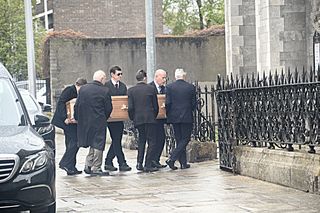Property prices rise by 6pc as prospect of rate cuts fuels demand for houses
Housing demand continues to far outweigh supply. Photo: Stock image
The possibility that interest rates have peaked and are set to fall has been cited as one reason for the pace of property price rises picking up.
Prices surged by 6.1pc in the year to February, with the continual rises making affordability for buyers a huge issue.
The February increase was larger than the rise of 5.4pc in the year to January, according to the Central Statistics Office (CSO).
This means the pace of property price rises has picked up, and it was the sixth month in a row of prices rising nationally.
Today's News in 90 seconds - 18th April 2024
Independent economist Austin Hughes said the continuing pick-up in house-price inflation in February reflected higher demand.
He added that this was fuelled by the sense that interest rates had peaked and could fall significantly over the next year.
This was coupled with improving incomes supported by Budget measures and an easing in inflation.
“At the same time, the fact that the volume of sales is lower than a year ago emphasises the continuing constraints on supply,” he said.
Prices have now risen so much that median house prices are nearly seven times average earnings. Mr Hughes said this meant affordability issues should restrain house-price inflation somewhat.
“But price pressures could be sustained for some time because of the prospect of lower interest rates,” he said
“And pre-election Budget promises mean there are likely to be more potential purchasers than available properties for some time to come.”
In Dublin, prices rose by 5.6pc while outside the capital they were up by 6.5pc, the CSO said.
Price rises are being turbo-charged by a lack of properties to buy, and by the State support schemes for buyers, particularly the Help to Buy scheme and the shared-equity First Home scheme.
Residential property prices of new dwellings in the last three months of last year were 9.2pc higher than in the same quarter of 2022. Prices of existing dwellings in the fourth quarter of last year were 1.6pc higher than in the corresponding quarter of 2022.
The CSO produces price indices for new and existing dwellings on a quarterly basis. In February, 3,327 homes purchases by households at market prices were filed with the Revenue Commissioners. This was down by 0.7pc when compared with the 3,351 purchases in February last year, the CSO said.
Robert Gardiner, director and senior property negotiator at fixed-fee estate agency Auctioneera.ie, said the CSO data was not surprising.
Read more
“With every new property listing that goes live, we are consistently seeing very high demand from buyers,” he said.
“Viewing attendances are strong, with first-time buyers being hugely prevalent, as noticed in the record mortgage approvals for them over the last number of months.”
Mr Gardiner said the market was experiencing record low levels of supply in second-hand properties.
The median price of a dwelling purchased in the 12 months to February was €330,000, the CSO said.
The lowest median price by area for a dwelling was €165,000 in Leitrim, while the highest median price was €620,000 in Dún Laoghaire-Rathdown.
The most expensive Eircode area over the 12 months to February was in Blackrock in Dublin, with a median price of €715,025. Castlerea, Co Roscommon, had the least expensive price of €135,000.
The national Residential Property Price Index (RPPI) has now reached the value of 177.6, which is 8.5pc above its highest level at the peak of the property boom in April 2007.
Join the Irish Independent WhatsApp channel
Stay up to date with all the latest news















